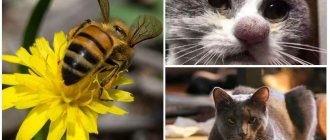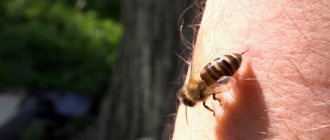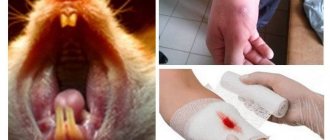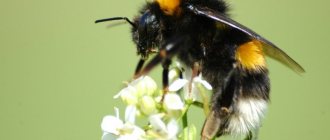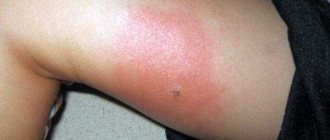During the warm summer months, trees, plants and flowers bloom, birds sing, and our cats spend more time outdoors. Local wildlife is at its peak as summer takes advantage of all the fruit on offer. Unfortunately, this is the time when insect bites most affect both us and our pets. Bees and wasps are a common cause of insect bites in cats. In general, bees and wasps do not bite unless provoked. Cats can be "accidentally" stung if they touch, step on, or kick wasps and bees.
Bees and wasps are known to be venomous insects that inject venom into an unsuspecting victim when they bite. When a venom is injected into an animal, it can cause local tissue reactions or a whole body reaction in allergic or sensitive cats. More adventurous or inquisitive cats, such as kittens, may be more likely to suffer from wasp and bee stings as they are more likely to explore or try to catch these insects. Cats have a strong prey drive, which makes them more likely to be stung by wasps or bees than other species.
Signs that your cat has been stung by a bee or wasp
If you've ever been stung by a bee or wasp, you'll understand that it can be painful and irritating. Bee venom is acidic with a pH of 5.0 to 5.5 and is therefore very irritating to the affected tissue. Wasp venom is closer to neutral at a pH of about 6.8-6.9. Nonallergic reactions usually develop within a few hours, but severe allergic reactions (anaphylaxis) tend to occur more quickly and often within one hour of a cat being stung by a bee or wasp. The consequences of a bee or wasp sting will depend on where your cat was stung, how many stings she received, and whether she has been stung before. Cats are very good at hiding pain or discomfort, but some of the symptoms they will show if they are stung by a bee or wasp are listed below:
© shutterstock
- By unexpectedly nipping or licking a body part - you may have noticed that they were playing with a wasp or bee in the garden a few minutes before.
- Swelling, redness, itching and local irritation - at the site of a bee or wasp sting. Cats are usually stung on the paw, face or nose. In long-haired cats, these skin changes may be more difficult to detect.
- Pain – Your cat may vocalize more frequently than usual.
- Cats that may have a bee sting in their mouth or a wasp sting in their nose may paw at the area due to discomfort .
- Urticaria is an allergic skin pattern characterized by multiple swellings throughout the body.
- Trouble breathing or difficulty swallowing – If your cat is stung by a bee or wasp on the face or in the mouth, such as the tongue, it may cause swelling of the face, mouth and/or neck.
- Drooling, vomiting, diarrhea, rapid breathing, difficulty breathing, pale gums (shock), and collapse may occur if your cat develops anaphylaxis as a result of a wasp or bee sting. This happens more often with cats that have been stung before.
Allergy
Swelling from a bee sting is already a sign of a serious problem. If this is all you need to do, you can cope without specialized help. But when a tumor of the larynx, vomiting or diarrhea, and heart rhythm disturbances are added to this, it is worth talking about an allergic reaction. It is no longer possible to do without the use of antihistamines.
At home, homeopathic remedies such as Apis tablets will help prevent the development of a reaction when a cat is stung by a bee. You can also give Tavegil, Suprastin, Diazolin or Diphenhydramine.
If a bee gets stung in the face or enters the oral cavity, it is recommended to use the following remedies:
- a Prednisolone tablet is crushed into powder, diluted with water and poured into the cat’s mouth; if this option does not help, take the drug in an ampoule and inject the medicine;
- if you have nausea, vomiting, or difficulty breathing, you will need a Dexamethanose injection;
- If you are allergic to bee stings, L-cet suspension helps.
If these medications do not provide relief and the allergic reaction continues to worsen, medical attention will be needed.
L-cet
Are bee or wasp stings harmful to cats?
In most cases, a bee or wasp sting is not life-threatening to your cat. However, they can be very irritating and distressing to your pet, and if stung in certain areas or multiple times, it can lead to more severe symptoms.
Cats that are stung and develop severe swelling in the mouth and neck may have a narrowing of the airways. If your cat has been stung by a bee or wasp and is struggling to breathe, then this is an emergency and you should contact your veterinarian immediately.
Bites to the paws can cause pain when walking and may cause your cat to limp. It may take a few days for the lameness to go away as the swelling subsides.
Photos of cats stung by bees
In the photo you can see how swelling develops in cats bitten by bees.
The muzzle at the site of the lesion swells, the eye closes.
Important! When a bee bites a cat on the nose, it develops swelling not only on the skin, but also in the respiratory tract, which threatens the death of the animal.
Getting a sting in the face or cheek can also lead to serious swelling:
A lesion in the throat threatens swelling of the larynx and respiratory arrest in the animal:
If an insect bites the paw, there are no serious consequences, but it requires treatment:
An untreated paw can hurt for a long time, the animal will be immobilized:
The most dangerous bee stings are in the eye area. They are fraught with loss of vision.
The photo shows how swelling develops in cats stung by bees. All these conditions require correction by a specialist.
Can cats have allergic reactions to bee and wasp stings?
Cats stung by bees or wasps can develop severe and life-threatening reactions if they are allergic to the insect venom. This reaction is most often seen in cats that have been stung previously. This is the result of the cat becoming “sensitized” to the bite and the immune system overreacting the second time around. Anaphylaxis is an emergency and can be fatal if your cat does not receive prompt veterinary treatment, which usually includes supplemental oxygen, an IV, and medications such as epinephrine, steroids, and antihistamines.
First aid
If a bee stings, its sting remains in the body. The slightest touch to it increases the pain. Therefore, it is so important to locate the bite site and remove the sting from the cat.
This must be done extremely carefully, otherwise the sting will break and its poisoned tip will remain under the skin. In this case, it is more difficult to remove the fragment. You may even need surgery.
The place where the cat was bitten by a bee is treated with an antiseptic. This will help reduce inflammation. A cold compress is then applied to the swollen area.
Antiseptic
What to do
- Examine your pet - find out how many times your cat has been stung and where she was stung, such as the nose, mouth, face, paw or body. Beware, your cat may be in pain and may try to bite or scratch you. Check your pet for signs of anaphylaxis.
- Remove the stinger - If your cat was stung by a bee, the stinger may still be in the skin. Stings left in the skin can cause further release of venom, so a bee sting must be removed immediately. The best way to remove the stinger is to use a bank card or something similar. The card is stroked along the edge, carefully over the pet's fur to remove the sting. If you are unable to remove the sting with a card, tweezers can be used, but this may cause further release of toxins if the sting is squeezed. It is not necessary to remove wasp stings.
- Watch for an allergic reaction - this reaction usually occurs fairly quickly after the bite, usually within one hour. If your cat is unconscious or has trouble breathing, contact your veterinarian immediately as she will need emergency care.
- Call your veterinarian if your pet is bitten on the face, mouth, or throat, or multiple times —urgent care is needed for bites to the face, neck, or mouth, as severe swelling in these areas can make it difficult for your pet to breathe. Your veterinarian may prescribe medications for your pet to reduce swelling, such as steroids and antihistamines. They may also want to monitor your pet for a few hours to make sure the swelling doesn't get worse.
When should you contact a veterinarian?
If your cat's condition worsens after being bitten by an insect, seek help from a veterinarian. Difficulty breathing, vomiting, convulsions, increased swelling - these are signs that the cat needs to be taken to a veterinary clinic urgently.
If a bee has bitten a small kitten, immediately contact a doctor. You cannot treat a young cat at home. Bee venom is too dangerous for a small animal.
If a cat has been stung by more than one bee, it is necessary to immediately provide first aid, relieve the pain and immediately take it to the veterinarian.
Home remedies for bee and wasp stings
If the sting is mild, it may be appropriate to treat the bee or wasp sting at home. However, you should exercise caution as the bites are often painful and your cat may lash out. Ice packs can be placed on the bite to reduce the swelling and pain your cat experiences. Be sure to cover the ice packs with a kitchen towel or something similar to prevent your cat from getting frostbite or becoming uncomfortable.
Since bee venom is acidic, adding alkali can help neutralize its effects. Bicarbonate of soda (baking soda) can be diluted with water and applied as a paste to the local area. Chamomile lotion has a similar effect. If these products are not available, applying a small amount of toothpaste to the affected area may also help. Do not use any other alkaline products without first consulting your veterinarian.
Antihistamines such as Benadryl may also be useful in treating bee or wasp stings in pets. However, call your veterinarian first to find out if it is safe for your pet and how much to use, since the dosage for pets is different than the dosage for humans. There are many different antihistamines available on the market, but some ingredients are harmful to pets, so check with your veterinarian first to see if it is safe.
Posted by Christian Adams An American expat living in Metro Manila, Philippines for over a decade, Christian is a lifelong cat lover and the proud father of two rescue cats, Trixie and Chloe. Both girls used to be among the crowds of homeless people who roam the cities and countryside. Three-year-old Trixie was rescued from a litter found under a neighbor's porch, and two-year-old Chloe was brought home by Christian's young son, Henry, who discovered the crying kitten in the parking lot.
How to protect your pets
In summer, it is necessary to protect your cat from bites of various types of insects. It will not be possible to completely protect your pet from the environment, so you should make his stay in nature less dangerous.
Prevention measures:
- It is necessary to install mosquito nets on windows indoors, especially outside the city.
- It is necessary to clean the garden plot and destroy wasp and bee nests.
- The cat should be fed and watered only indoors, not outdoors. This way, the risk of swallowing a dangerous insect with food can be minimized.
- Before going outside, the cat is treated with repellents, which makes it possible to protect his stay on the street for several hours.
Important! If all these measures are observed, insect damage to the animal can be eliminated.
Treatment with drugs
For minor lesions, local prevention can be carried out at home using pharmaceutical and folk remedies.
Ointments
To treat cats bitten by bees, medications are chosen based on the degree of damage:
- for minor bites, it is enough to treat the soft tissues with creams based on medicinal herbs (Menovazin, Bepanten, Zvezdochka);
- for moderate severity, you will need Fenistil gel;
- if the signs have become more pronounced, then it is no longer possible to do without deep penetration drugs that have an antiallergic effect (Betamethasone, Advantan, Elokom, Triaccutane).
When the bite results in infection entering the wound, you will need antibiotic ointments - Erythromycin, Gentamicin, Tetracycline, Levomekol.
Note! Ointments are applied to all external areas except the lips. The pet will quickly lick the medicine from them.
Fenistil
Folk remedies
You can also alleviate the suffering of a bitten cat using available means. In the absence of alcohol or hydrogen peroxide, it is recommended to treat the wound with soda slurry. The following recipes also help:
- Soap solution, infusion of sea buckthorn, chamomile, and calendula have a calming effect;
- Pieces of apple, orange (grapefruit) applied to the wound will help relieve irritation;
- You can calm itching and pain with the help of oat lotions;
- swelling will be removed with water acidified with lemon or vinegar;
- inflammation can be relieved with an aqueous solution of turmeric.
Folk remedies are effective when bees bite a cat on the paw or body. If the lesion is on the face, then this method of treatment will only temporarily relieve the animal’s suffering.

